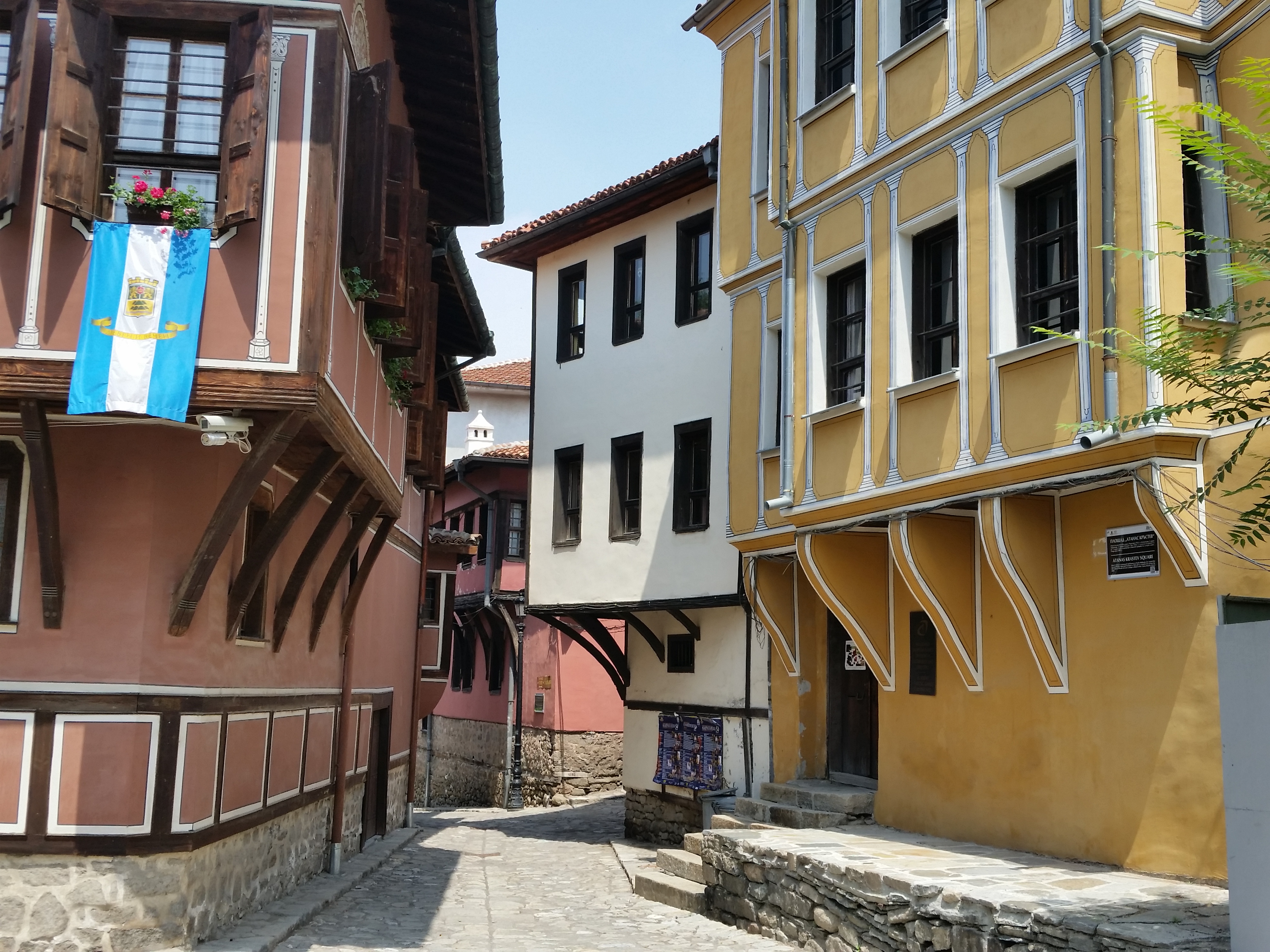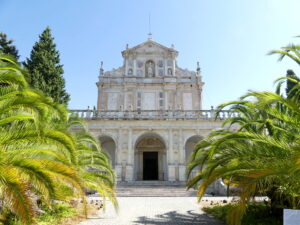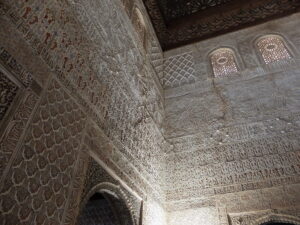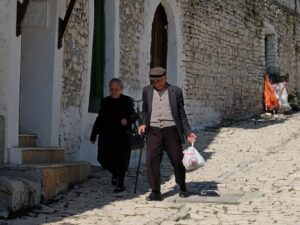In brief: The layers of history that emerge in Plovdiv provide a multi-faceted charm we couldn’t resist.

Bulgaria’s second city Plovdiv – set on seven hills, 150 kilometers east of Sofia – has been called one of Europe’s oldest towns, dating back 8000 years. So many imperial rulers seemed to love the town that they kept taking it over: the Thracians in the 1st millenium BC; the Macedonians by the 4th century BC; the Romans, the Bulgars (and a host of other tribes), and then the Ottomans for 500 years until the mid-19th century.
Each empire left its mark on the city, furthering it’s regional importance for trade. The Romans brought theatres, temples and colosseums. The Ottomans, their baths, mosques, administration and dwelling style. Finally, Bulgarian nationalism here led to the country’s independence, as well as extensive home building in the colorful Bulgarian Revival style. The result is a multi-layered charm – such as the following – that we couldn’t resist.
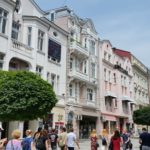
Plovdiv’s “new town” is filled with eclectic late 19th and early 20th century buildings, especially along its main street, now a pedestrian thoroughfare. Underneath this street, just a few years ago, builders discovered a well preserved Roman stadium 240 meters (800 feet) long. The semi-circular end was excavated and is viewable below street level. The rest remains hidden because hundred of buildings like these would have to be torn down.

Even charming Europe is not immune to the charms of this city, so Plovdiv is next year’s culture capital in the EU. We just missed the annual opera festival this year, and there’s a lot more going on during the summer. Bulgaria is nearly integrated into the EU, but does not yet use the Euro nor participates yet in the shared Schengen border. So the “together” seems to express anticipation of that integration.
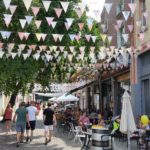
The old market area near the central mosque of Plovdiv is known as Kapana, or the “Trap.” Like most Ottoman-style bazaars, narrow wayward streets made it difficult to find your way out. Craftsmen and traders occupied the ground floor spaces. Then fire, 1920s reconstruction and Communist-era urban renewal removed much of the complexity, as well as the shops. By the 1980s, with the buildings in disrepair, artists and craftsmen moved in again to the cheap space. The locals and tourists followed them. Now, progressively cleaned and polished, Kapana streets are more of a nightlife draw or an artisanal “trap” for tourists.
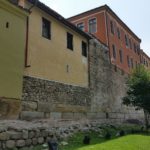
Many actual layers of history line up in one picture. In the transition from Plovdiv’s new town, along the flats, to its old town, among the seven hills, are walls that show four historical eras spanning over 2500 years. The rough stones in the foreground are Thracian walls, the ones that ringed the old city and helped protect the fort at the top of one of the hills (now sadly in ruins nearby). The larger ones on the next level up are Roman city walls. Then come the smaller medieval ones. And finally the stuccoed walls of the 19th century Bulgarian Revival homes, an outgrowth of increasing prosperity and nationalism. These now adorn the principal streets of new town, while Ottoman era homes remain along the hillside lanes.
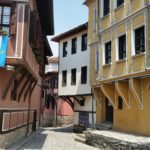
Any intersection in Plovdiv’s Old Town can delight with a view of several Bulgarian Revival homes. Merchants grown wealthy from the extensive trade routes through Plovdiv used their wealth to build these substantial homes in the new style. The upper floors, however, imitated the Ottoman style by stretching beyond the lower floor…and saved money, as the footprint was the basis for tax payments.
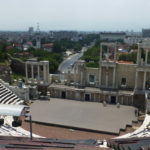
A Roman theatre, set into the natural concave between two of Plovdiv’s hills to ensure lower cost construction costs. Here local citizens were entertained 2000 years ago. A few years ago, ten houses sat atop this area, each of which enjoyed a splendid hillside view. One of the homeowners was redoing his garden and found a Roman column stuck in the ground. Archeologists investigated and realized that a largely intact theatre lay beneath the houses. So the city kicked out the homeowners, sent them off to apartments elsewhere, removed the buildings and set the archeologists to the reconstruction effort you can visit now for contemporary entertainments. As our guide said, a homeowner would think twice these days about reporting such a find.
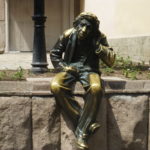
A tribute to the local town vagabond, Milo the Crazy. His comic appearance, with a rubbery face and big ears, delighted children for decades while adults came to appreciate his eccentricity. He was deaf, so he seemed to listen hard to conversations. He was also thought to have had an enormous penis, a reputation that lent some charm for local women and wariness among local men. Legend surrounded him in life, and now in his statue. If you whisper a hope or dream in his ear, legend says, your wish will come true. Or, if you rub the hand that reaches into his crotch, you will enjoy a prodigious love life. The hand is well polished by visitors’ touch.
(Also, for more pictures from Bulgaria, CLICK HERE to view the slideshow at the end of the itinerary page.)


